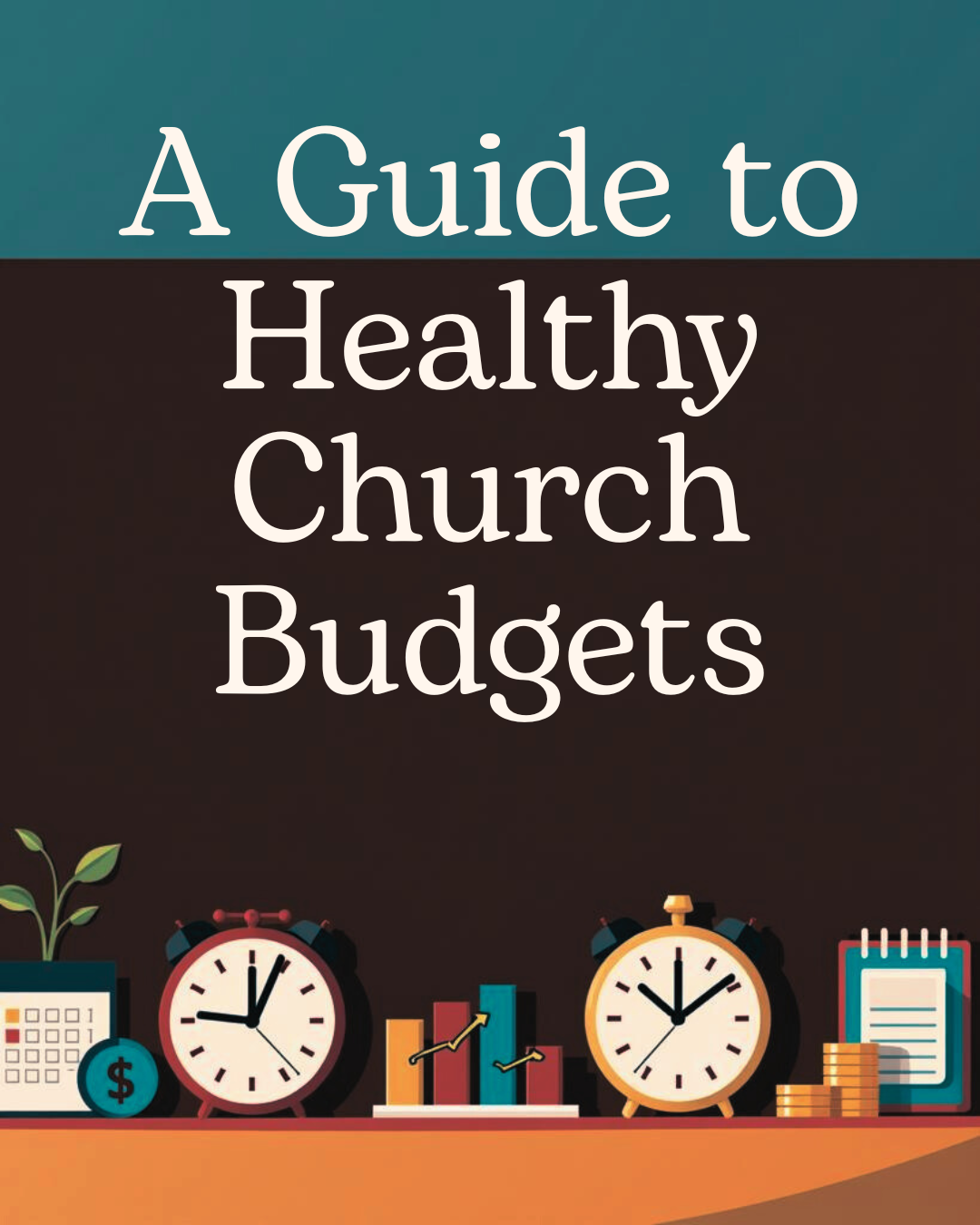A church budget isn’t just math … it’s ministry. It reflects your church’s vision, priorities, and plan to disciple people over the next year. This blog provides church leaders a quick guide to healthy church budgets.
Why Budgets are Important
Scripture commends wise planning (Proverbs 21:5), faithful stewardship (Luke 14:28–30), and kingdom-first priorities (Matthew 6:33). When we budget, we’re not merely allocating money, we’re aligning the whole church towards generosity, unity, and mission impact.
“Where your treasure is, there your heart will be also.” Matthew 6:21
A budget reveals what a congregation truly values.
A Practical Timeline for Budgeting
When should a church start budgeting for the new fiscal year?
Too many churches wait until the last minute to pull a budget together, but budgeting isn’t meant to be a last-minute end of the year task.
It requires prayer, planning, and alignment.
3–4 months before fiscal year-end
- Begin forecasting revenue
- Ask ministry leaders for needs
2–3 months before fiscal year-end
- Create the first and subsequent drafts and align with the vision and priorities of the church
1 month before fiscal year-end
- Finalize and approve per bylaws; prepare a member-friendly summary.
- Set quarterly review checkpoints for the new year.
“The plans of the diligent lead surely to abundance…” Proverbs 21:5
Budgeting takes time … choose wisdom and faithfulness over urgency.
Leadership in Budget Planning
Pastor’s should be involved in the budgeting process for your church.
Pastors and Elders utilize spiritual discernment (Titus 1:9) and have been tasked with the spiritual well-being of their congregation (Hebrews 13:17).
They do not need to run spreadsheets, but they do need to:
- Help set the overall budget totals.
- Establish budget priorities and allocations that reflect the church’s calling.
- Distinguish long-term vision from short-term initiatives.
- Communicate with clarity and unity to the congregation.
How to Estimate Next Year’s Income
Here’s three ways to forecast, or estimate, your church’s income for next year …
1) History-Based
Use Year-over-Year and Month-over-Month trends or weekly averages. Project weekly giving by counting Sundays per month next year. Simple, but effective if you weigh seasonality.
2) Donor-Informed
Analyze household givers, attrition/additions, and average gift changes. This can get granular, but powerful when you track donor households responsibly.
3) Cost-Constrained
Add staffing, programs, missions, and operations you believe are necessary and see what income would be required—then sanity-check against history and donor trends.
These three are not all encompassing, and even combining multiple methods works as well.
Which method you choose depends on the level of information you have available, the administrative support you have to help, and the vision and promises God has called your church to.
The Five Major Expense Buckets
Here’s the five different types of church expenses you should budget for:
- Payroll – Salaries, taxes, benefits, contractors. Many churches aim to keep total payroll at or below ~50% of income.
- Missions & Giving – Outreach, benevolence, denominational giving, and global partners. Even if some are donor-funded, consider placing core mission giving in the general fund to reflect priorities.
- Programs – Some examples are kids, discipleship, worship/AV, groups, etc. Tie dollars to specific ministry outcomes.
- Facility – Mortgage/rent, utilities, repairs. Aim to keep facility costs (including debt service) less than 25–30% of income when possible.
- Admin/Operations – Insurance, software, supplies, merchant/bank fees, professional services. Keep lean but robust enough to support ministry well.
Consider adding a small contingency line and a reserves goal so you’re prepared for surprises and can sustain ministry through dips.
Communicating the Budget
The church budget is completed, approved, and ready for the next year … now what?
Talk about it!
Teach with it!
Encourage through it!
Use the moment to reiterate your vision and show how resources fuel ministry.
- Share a simple story: where dollars go and why.
- Teach on generosity, stewardship, and trust in seasons that feel tight.
- Be transparent and invite questions; aim for congregational unity around mission and vision.
- Don’t go silent after adoption, give quarterly updates celebrating ministry fruit:
- “We gave $X to missions this quarter.”
- “Your giving funded programs where people met Jesus.”
- “We served our community during [event] in practical and spiritual ways.”
Putting It All Together (Quick Action Checklist)
- Pray with leaders about next year’s priorities.
- Set an honest income projection (history + donor insight + cost reality).
- Allocate to five buckets with ministry outcomes attached.
- Build in reserves & contingency for wisdom under uncertainty.
- Publish a narrative budget + line-item appendix members can truly understand.
- Report quarterly: progress, stories, and next steps.
Recommended Resource
I highly recommend all pastors read this book to help understand church budgets at a deeper biblical level.
The book goes into more detail as a guide to healthy church budgets.
Budgeting for a Healthy Church by Jamie Dunlop is a pastor-shaped framework for aligning dollars to discipleship, reinforcing the conviction that budgets reveal what we value and helping leaders connect theology to spreadsheets.



